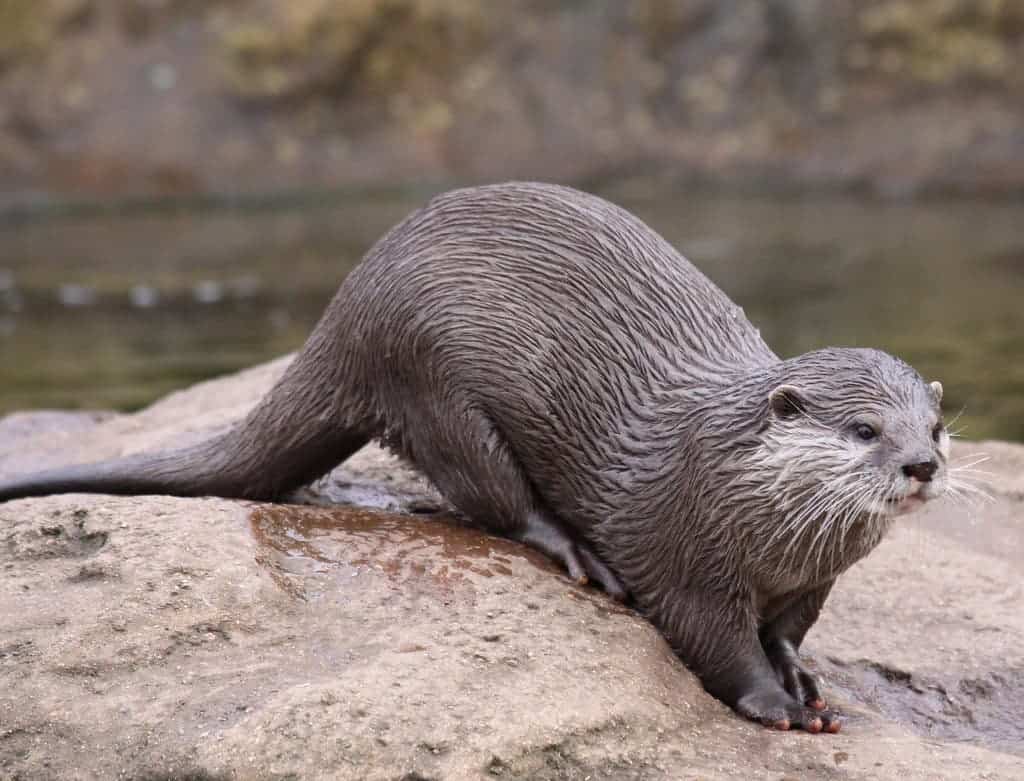Toxic, long-lived chemicals have been found in freshwater otters in the UK. The findings point to “widespread pollution” of the country’s waterways with PFASs — perfluoroalkyl and polyfluoroalkyl substances (PFASs).

PFASs are known as ‘forever chemicals’ because of their very long lifespan. These compounds are characterized by a strong carbon-fluorine structure which is very chemically stable, making them very hard to degrade in the wild. PFASs have been linked to health problems both in humans and wildlife in the past.
The new study found these substances in all 50 samples recovered from otters across England and Wales; at least 80% of these samples contained 12 or more different kinds of PFASs.
The findings showcase the wide scale of pollution in UK rivers and were published in support of a parliamentary report which held that no English river was free from pollution.
Dirty waterways
“PFASs are a large family of synthetic chemicals used in consumer products for their oil and water-repelling properties, in food packaging, non-stick cookware, waterproof clothing, stain resistant products, paints and fire retardants, amongst other things,” says Emily O’Rourke, a Ph.D. student and lead author of the study.
“They’re known as ‘forever chemicals’ because their strong carbon-fluorine structure means they don’t break down easily in the environment. In recent years there have been efforts to phase these chemicals out, but they remain ubiquitous because of their environmental persistence.”
The team sampled liver tissue from otters that had died between 2007-2009, analyzing these for PFASs content. Records of where the otters were found along with land-use records over that time were used to determine contamination levels at different sites across the UK, and to gauge potential sources of contamination. This time period was selected as it coincided with legislation changes in regards to the use of PFASs; these changes led to the phasing out of the two most common such chemicals, but they were soon replaced by emerging alternatives.
The team sampled 50 otters, finding all of them were contaminated with PFASs. Roughly 8 in every 10 otters showed measurable levels of 12 or more PFASs. These results point to “significant and concerning” contamination sources with such substances into UK rivers, the team explains.
Eurasian otters (Lutra lutra) are apex predators in British waterways and act as reliable indicators of the level of chemical pollution in their environment. Studying them is vital to our understanding of the substances that affect wildlife in the UK’s rivers. The authors note that their findings are validated and supported by similar results obtained by the separate Otter Project, which used more recent samples collected in 2015-2018.
The results point to a few key sources of PFAS pollution. One was a factory on the northwest coast of England that previously used perfluorooctanoic acid (PFOA) in its activity. Other important sources were wastewater treatment sites, which suggests that domestic and industrial wastewater is a significant source of these chemicals in the environment. Samples recovered near agricultural lands also showed high levels of PFASs.
“Our study provides further evidence to support the conclusion of the recent Environmental Audit Committee’s report which highlighted a ‘chemical cocktail’ of contaminants in our waterways,” said Mrs O’Rourke. “The report recommended an independent evaluation of the risks to human health and the environment of spreading sewage sludge—our study provides important evidence that PFASs should be included in that evaluation.”
“Further work is needed to understand where the highest concentrations are now and any current sources of contaminants. It is deeply concerning PFASs were introduced into the environment through industrial and farming practices — policy and management action is vital to address this where it remains an issue,.
The paper “Anthropogenic Drivers of Variation in Concentrations of Perfluoroalkyl Substances in Otters (Lutra lutra) from England and Wales” has been published in the journal Environmental Science & Technology.






